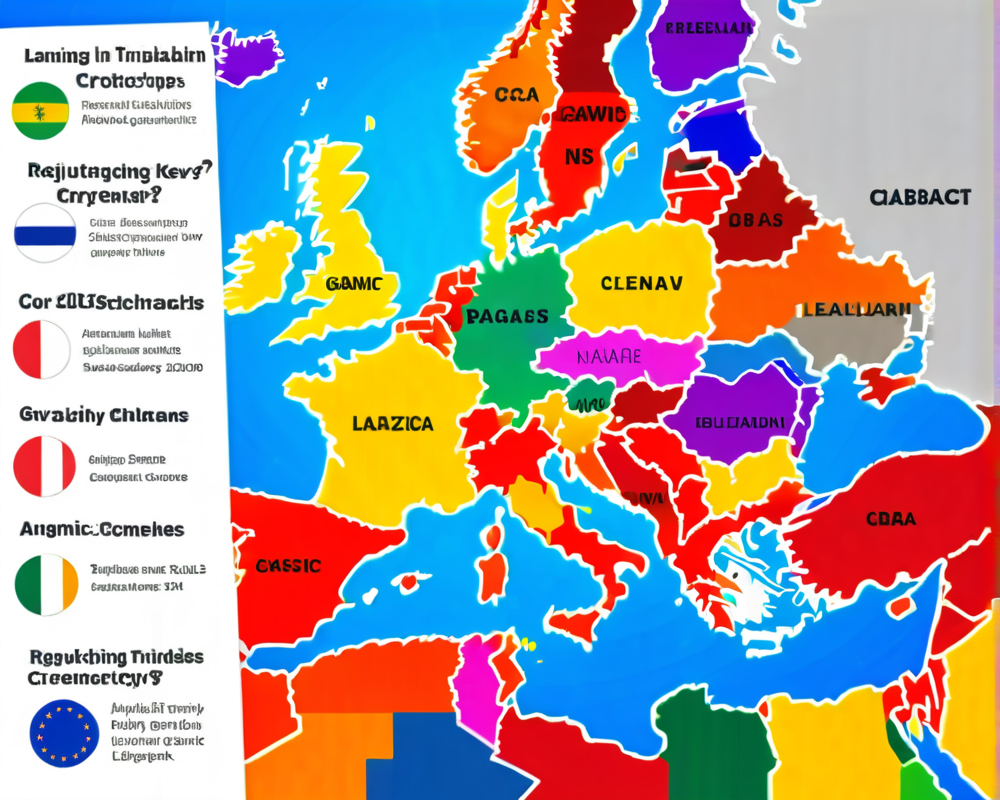Shifting Tides: Europe’s Approach to Cryptocurrency Regulation
In the world of cryptocurrencies, Europe is tightening the reins, inspired by a surge of anti-money laundering zeal. Last week, the European Parliament took bold steps to refine crypto regulation, proving once again that the coin keeps rolling, but policymakers are often stumbling after it. But fear not! This isn’t a complete rejection of the digital currency concept; it’s more like a cautious first date—both parties are interested but still feeling things out.
Blockchain Beyond Currency: The Bigger Picture
On April 10, European leaders from 20 member states, along with Norway and the UK (yes, they still like to crash the party), gathered to unveil their vision for Blockchain’s future. Their Declaration on a European Blockchain Partnership isn’t just a fancy title; it’s a collective nod towards leveraging this technology for more than just buying pizza. These heads of state aspire to create ‘value-based, trusted, user-centric digital services.’ In tech jargon, that means they want to give digital services a proverbial financial makeover—without the transactions, thank you very much!
Embedding DLT in Existing Structures
The real kicker? The declaration indicates that instead of crafting an entirely new regulation for Distributed Ledger Technology (DLT), they plan to weave it into existing frameworks. Think of it like adding guacamole to your existing burrito—not entirely new, but definitely a step up. The Digital Single Market initiative serves as the canvas, aiming to connect and bolster Europe’s digital economy. With this approach, everything from public ID management to healthcare services might be on the chopping block for Blockchain-infusion. Spoiler alert: Mariya Gabriel, the chief of this digital initiative, confidently proclaimed that all public services may eventually become Blockchain savvy. That’s one ambitious vision!
Delegates, Dignitaries, and Data Integrity
Let’s take a moment to appreciate the impressive lineup of delegates who put their names on the dot-dotted line. We’re talking about heavyweights like nine ministers and a posse of deputy ministers, spanning tech and economy sectors across Europe’s big-shakers. Interestingly, Finland could have brought in a finance minister, but instead chose to send a representative focused on tech—an indicator of the service-first mindset in the room. It’s like sending a chef to a cooking competition instead of a financier; maybe they know how to spice things up!
Core Principles of the Blockchain Declaration
Keep your eyes peeled for three critical themes in the European Blockchain declaration:
- Public Sector Priority: The emphasis is on enhancing citizen experiences with public sector data, focusing squarely on data integrity and security. Sorry, private sector, you’ve got to wait in line!
- Interoperability and Scalability: The draft emphasizes standardized solutions, aiming to construct a shared ecosystem. It’s like a quest for the holy grail of unified Blockchains—minus the dragons, we hope.
- Privacy Matters: Not lost on these leaders is the need for top-notch security and user-control over personal data. The struggle between privacy and transparency is real, and this declaration pledges high standards, though specifics remain as elusive as a decent parking spot in downtown Paris.
Next Steps: From Declaration to Implementation
What’s next in this digital journey? Each signatory is tasked with designating a representative to collaborate with the European Commission on Blockchain strategies. By September 2018, they’re expected to identify cross-border public services ripe for Blockchain innovation. And by the end of the year, we might finally see some formal structures, designs, and technical governing rules emerge—no more paper napkin sketches! With the goal of initial cross-border actions rolling out by late 2019, it looks like Europe is gearing up to take the lead in the Blockchain relay race, baton firmly in hand.















+ There are no comments
Add yours